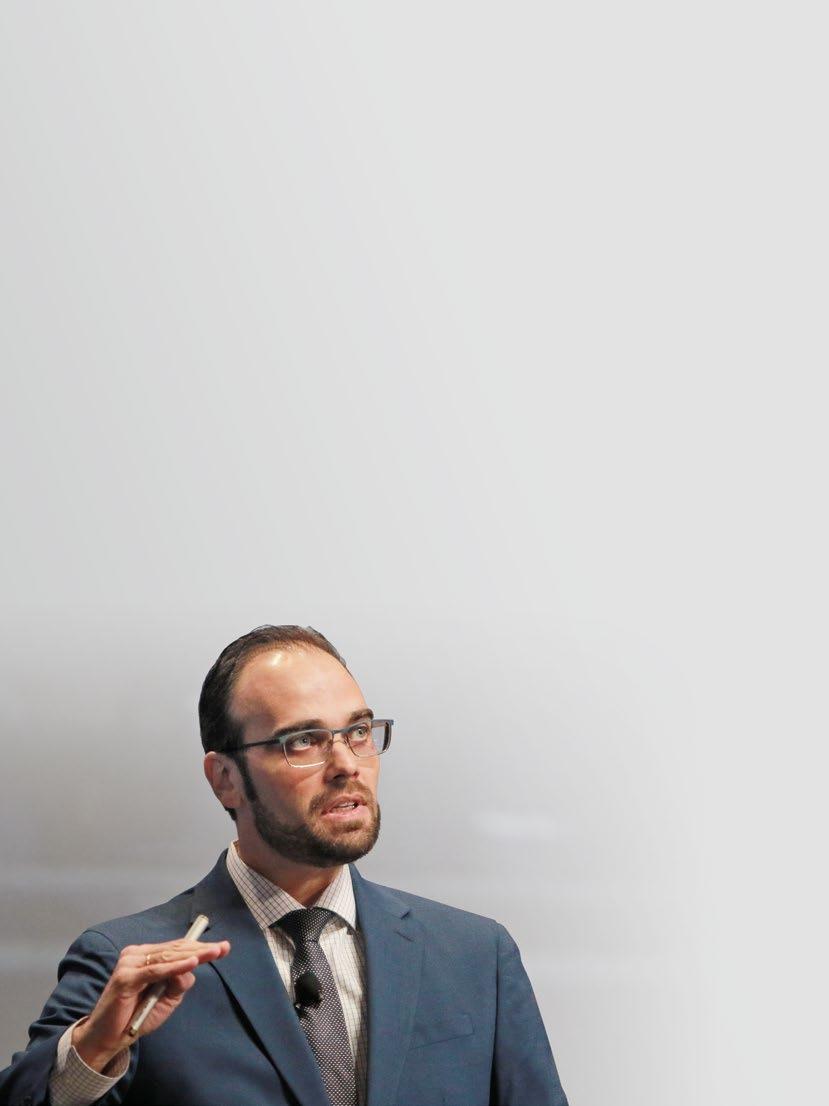Osteo Science Foundation – Collagen White Paper
“The right collagen membrane can improve the clinical outcomes” Interview with Drs. R Gilbert Triplett and Jay P Malmquist conducted by Todd Scantlebury
Drs. Gilbert Triplett and Jay P Malmquist published the Collagen White Paper in 2020. Up to now, over 8000 copies of the paper have been downloaded or distributed by Osteo Science Foundation. Drs Triplett and Malmquist, why did you write the Collagen White Paper?
quist
alm Dr. Jay P M
Photos: Gilbert Tiplett | Jay P Malmquist
Science f the Osteo first Chair o 14 0 in 2 Foundation
rt Dr. R Gilbe
Triplett
ence f Osteo Sci the chair o Scientific d n linical a C s s’ n o ti a Found –2020 mittee 2014 Review Com
Dr. Malmquist: I felt clinicians need an objective source for understanding collagens and collagen containing biomaterials as both commercial products and building blocks in regenerative procedures. As I recall the genesis of Guided Bone Regeneration and the continuous discussions about barriers versus membranes, collagen has always been in the limelight regarding the so-called “barrier of choice.” Collagen’s impact on implant dentistry and the basic lack of understanding clinicians have for collagen as an adjunct to healing, I thought it was important to define collagen products further. Dr. Triplett: Collagen is one of the most used biomaterials in dentistry and medicine, yet most practitioners know little about collagen products, and there’s scant scientific evidence for efficacy. Biomaterial companies have been reluctant to conduct comparative trials, so in many cases efficacy is based on anecdotal reports. One example: some collagen companies have not established how long their membranes function or even when they are resorbed. Busy practitioners may not assess their outcomes critically. Therefore, I was interested in
participating in this white paper both for my own knowledge and also for our profession.
Why collagen? Dr. Malmquist: A good question. For me it’s because it’s been the “go-to product” for barrier use in grafting. One has only to review the many product inserts, advertising and misstatements to understand the general lack of understanding that exists. So, when you hear someone say, “all collagens are the same,” that’s why we wrote the paper – to show there are differences. Some clinicians buy on price, but few understand how collagens affect the healing process or the real “cost” of their outcomes. Many clinicians are unaware of the different types of collagens or how they fit into the pathway of regeneration. We hope this paper will help. Dr. Triplett: Collagens are commonly utilized and have the potential to act as carriers for proteins, growth factors and live cells for tissue regeneration. Yet most clinicians do not know how or why to use one product versus another. Many times scientific evidence is lacking.
What do you think the key, take-home message of the paper is? Dr. Malmquist: That collagen is complex in nature, an adjunct to healing and variable in behavior. Certainly, the most important aspect is that collagens are not all the same, and they do not behave the same. Sourcing, cross-linking and processing are key elements in collagen’s behavior.
OUTSIDE THE BOX
25





